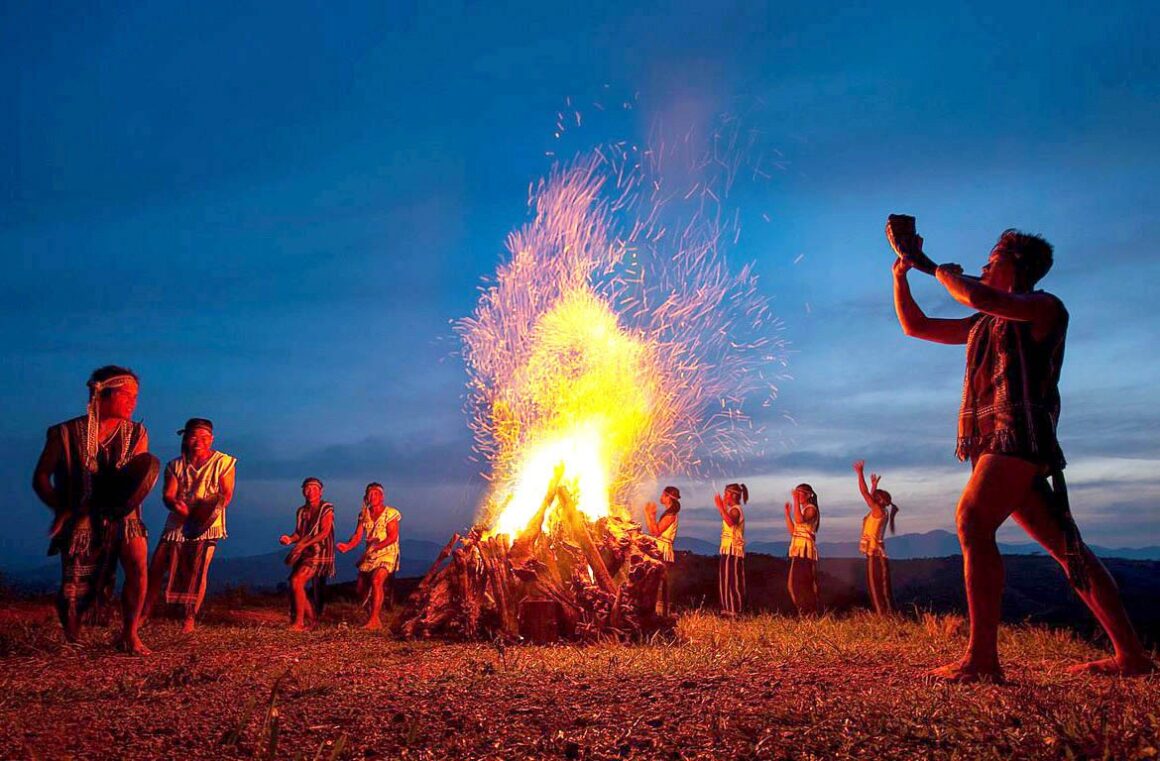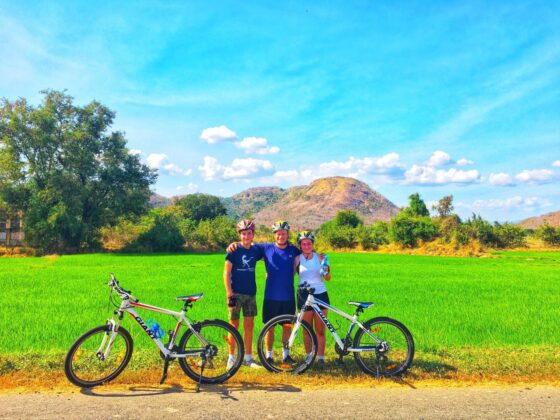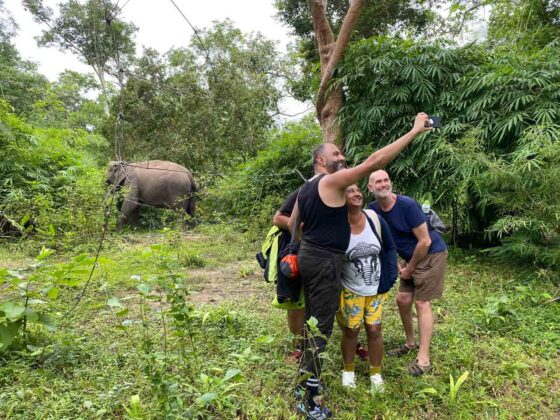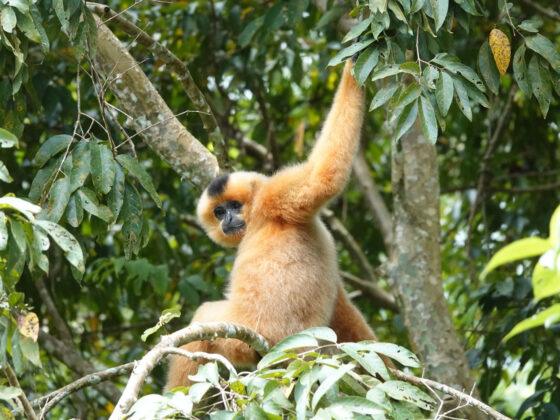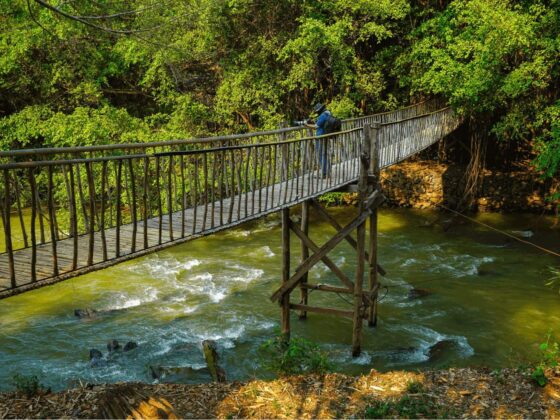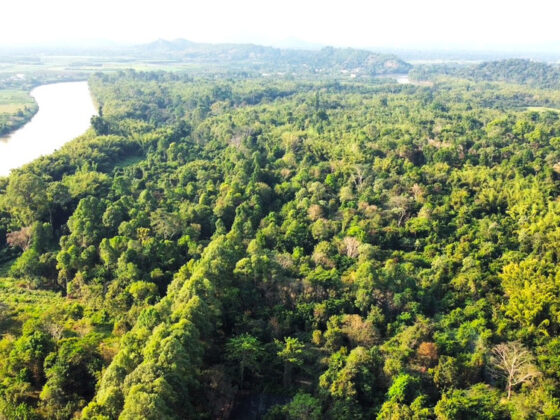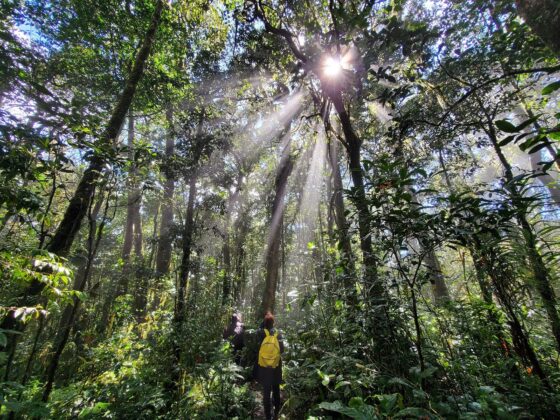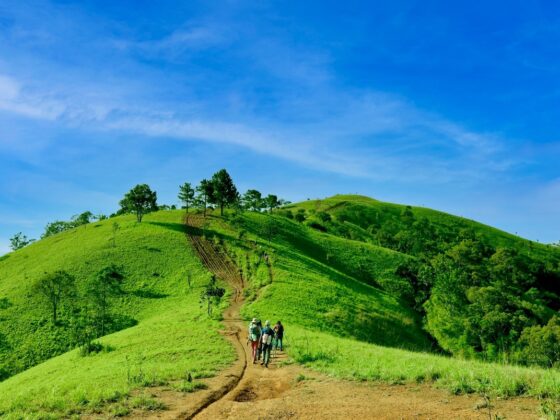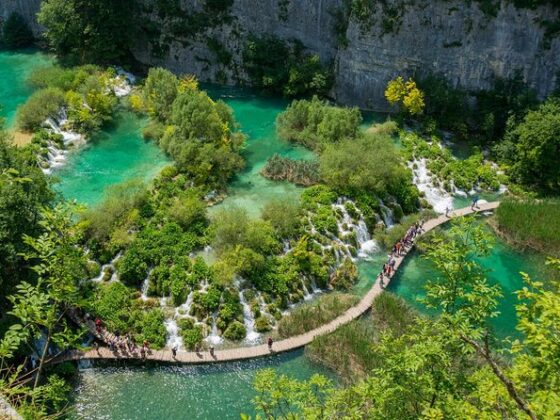Table of Contents Show
There are some nights that never leave you, no matter how many trails you walk afterward. For me, one of those nights happened deep in the Central Highlands of Vietnam, just outside Kon Tum, in a forest where the stars seemed to lean in closer than anywhere else I’ve ever been, a moment forever tied to my Tây Nguyên campfire experience.
Read more interesting posts here:
- More Than a Walk: The Benefits of Family Trekking in Vietnam
- The Ultimate Guide to the Tà Năng Phan Dũng Trek: Vietnam’s Most Beautiful Trail
- Red Earth and Muddy Laughter: A Guide to Mountain Biking in Lam Dong
The Trek to the Tây Nguyên campfire
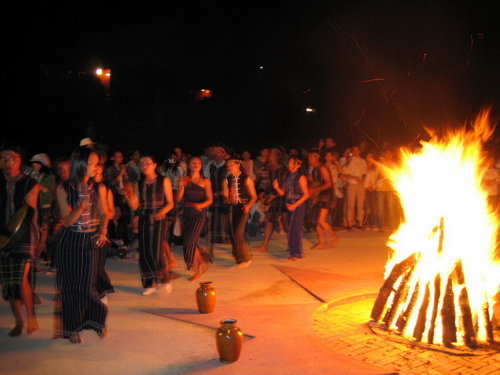
The day had begun like any other trek, trail shoes crunching over bamboo leaves, the earthy smell of coffee groves rising in the heat. Our small group wound our way past fields that had fed families for generations, guided by two Bahnar villagers, Sang and Khoi, who moved with an ease that made the rest of us look clumsy. They had grown up in these hills, and you could tell. Every bend in the path seemed to hold a memory for them: a tree where they had once hidden as children, a stream where they learned to fish with nothing but a woven net, stories that later became part of our Tây Nguyên campfire experience, shared under starlight.
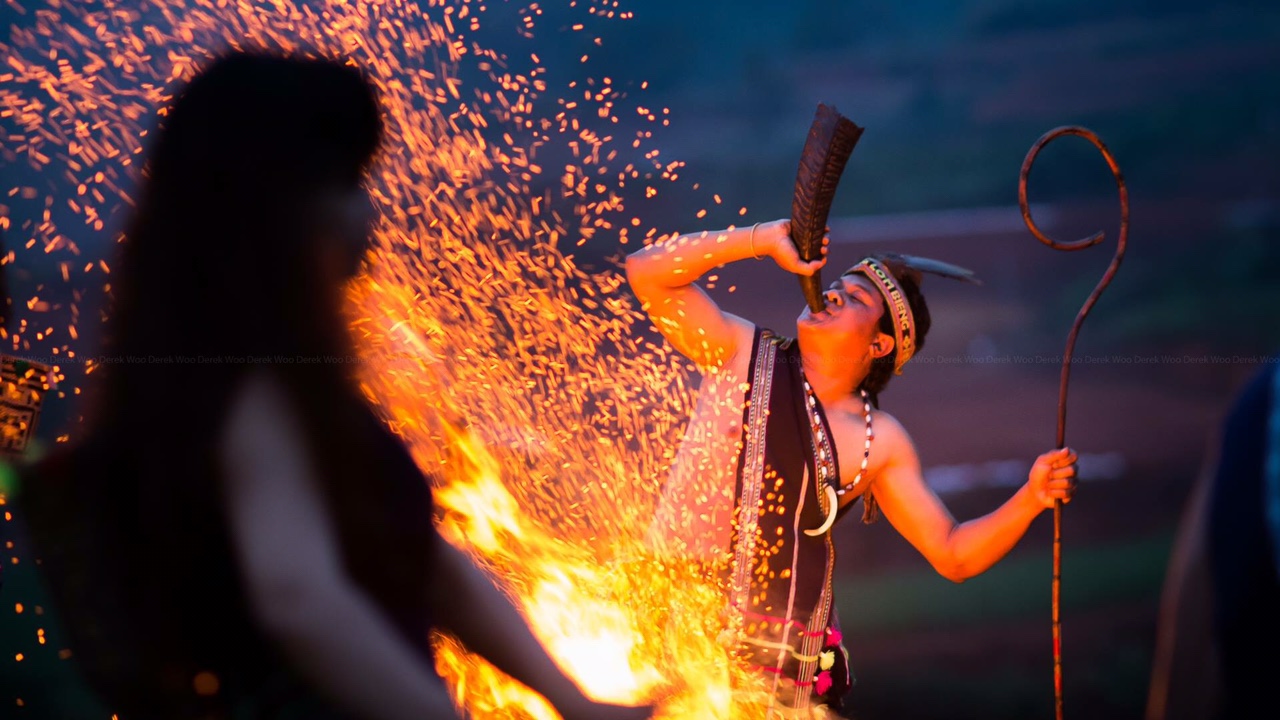
By late afternoon, our legs were heavy, and the trail had long left behind any sign of roads or villages. We finally reached a small clearing just as the sky shifted from blue to violet. It wasn’t much — a ring of grass pressed flat by past campers, a few stones scattered as if waiting to cradle firewood. But when the first flames sparked and the smoke curled upwards, it felt like the center of the world — the kind of moment that defines a true Tây Nguyên campfire experience.
The Heart of the Tây Nguyên Campfire Experience
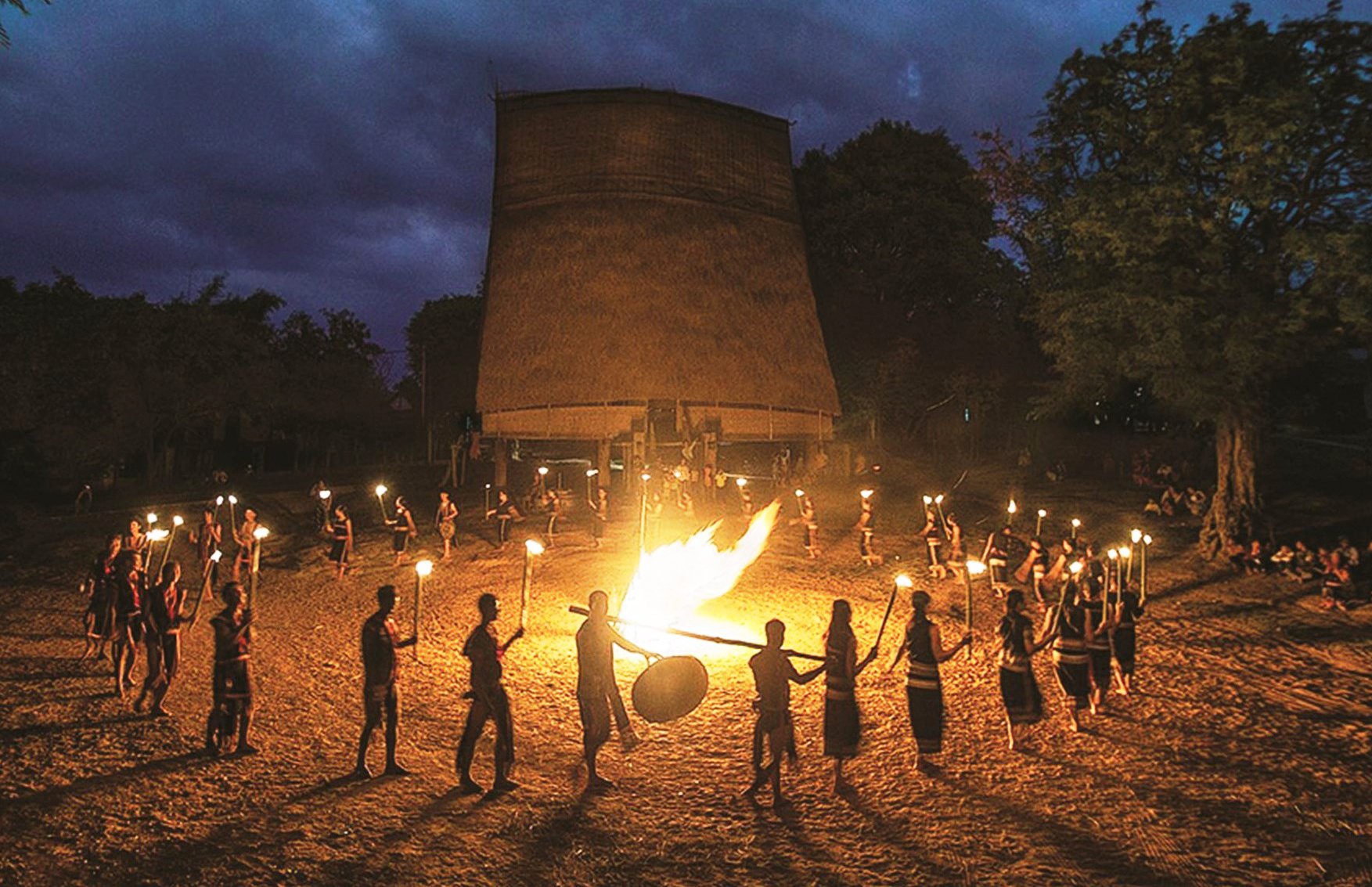
The Bahnar villagers brought out a large bamboo jar sealed with a bundle of straw. “Rượu cần,” they said with a grin, rice wine brewed in the village, shared by passing straws that bent like reeds. We huddled close, the night air settling cool around our shoulders, and the first sip burned sharp before softening into warmth. Then came the stories, weaving laughter and memory into the firelight, the essence of a Tây Nguyên campfire experience.
I didn’t understand every word, but their voices carried the weight of something ancient. One story told of forest spirits that guard the land, unseen, yet always watching. Another was about a tiger that once roamed these hills, feared and revered in equal measure. The villagers laughed as they recounted mischievous children playing tricks on the elders, or nights when they too had camped in the forest, fearful of the dark but comforted by song.
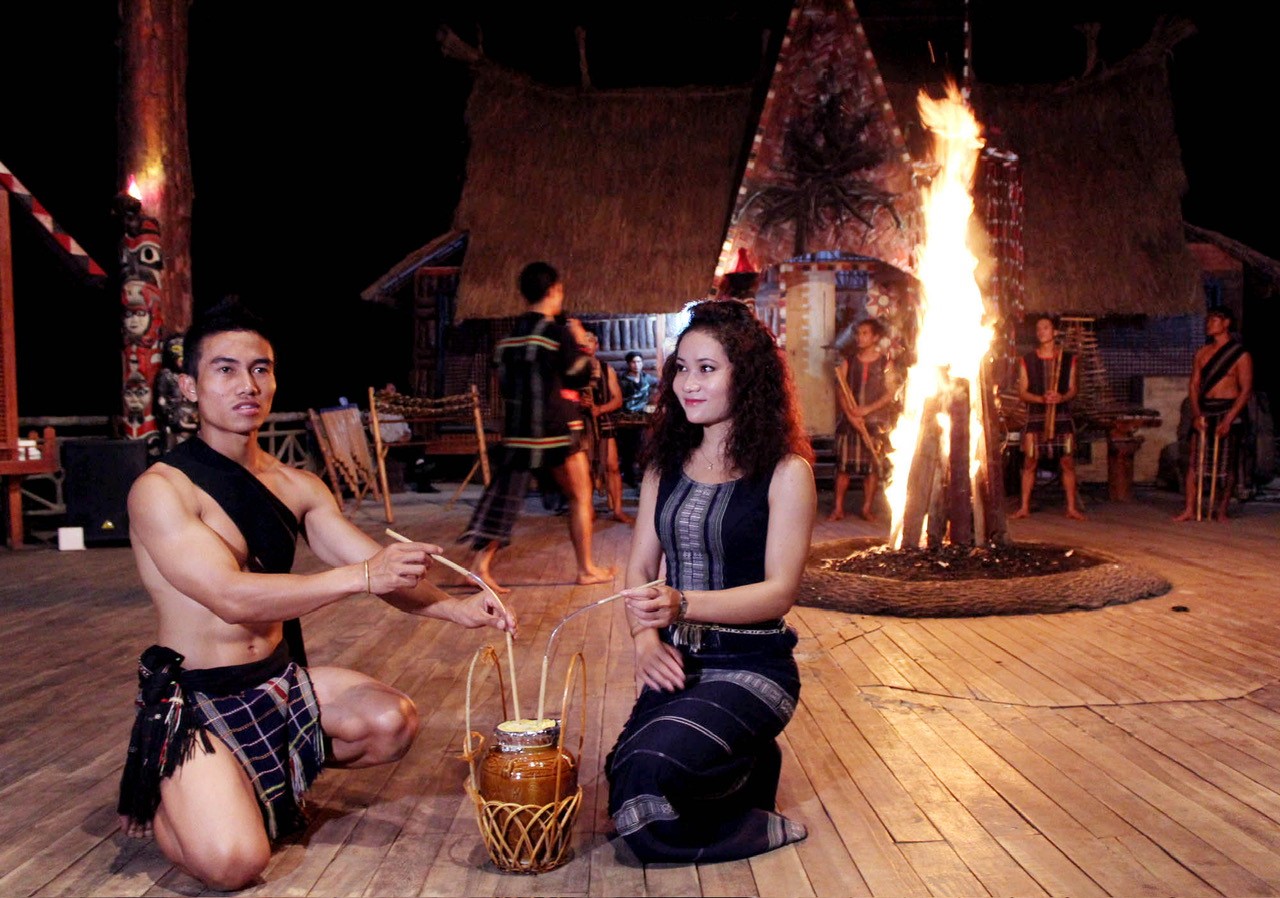
Somewhere between the fire’s crackle and the steady rhythm of voices, the forest felt alive. The stars above were brighter than lanterns, scattered in every direction, so close I thought I might brush them with my hand. And in that moment, I realized it wasn’t the trek itself I would remember, not the aching calves, not the sweat dripping down my back, but the generosity of the people who had welcomed me into their world, a true reflection of a Tây Nguyên campfire experience.
The Bahnar didn’t have much, at least not in the way outsiders might measure wealth. Their homes were simple, their possessions few. But that night they gave us everything: their rice wine, their laughter, their stories, and above all, their trust. It struck me that in places like these, generosity isn’t a choice; it’s a way of life, as natural as lighting a fire when the sun goes down.
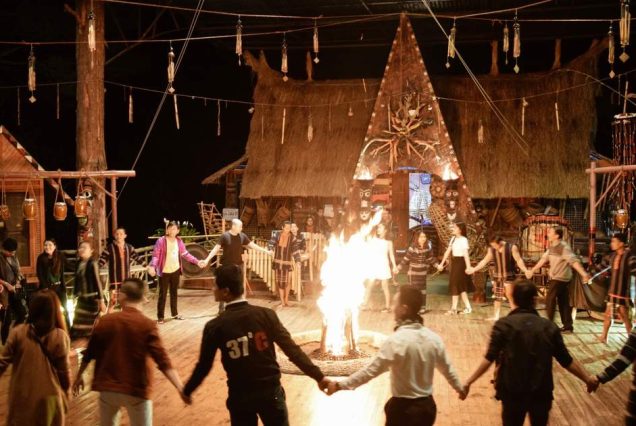
When I finally crawled into my tent, the embers still glowed and voices hummed in the background like a lullaby. I remember lying awake a little longer, not wanting to close my eyes, because I knew I was part of something rare, a fleeting glimpse into a life both humble and rich beyond measure, the very essence of a Tây Nguyên campfire experience.
Even now, when I think of Vietnam’s great outdoors, it isn’t always the dramatic cliffs or sweeping valleys that come first to mind. It’s that night in Tây Nguyên, a bamboo jar of rice wine, and the unforgettable warmth of a Tây Nguyên campfire experience, a reminder that the best journeys are defined not by the distance we travel, but by the people and moments we find along the way.
Conclusion
In the end, the Tây Nguyên campfire experience is more than a night in the forest. It is an invitation into a world of shared stories, profound generosity, and a connection to something ancient and real. It’s a powerful reminder that the best journeys are measured not by the distance we travel, but by the warmth we find along the way.
Ready to discover your own trail tale? Join our community of explorers in the ExoTrails Facebook Group and follow the ExoTrails Fanpage for daily inspiration and trail tips!
FAQs
What is the significance of a campfire in Tây Nguyên?
Campfires in Tây Nguyên, especially with local villagers, offer a unique opportunity for cultural exchange, storytelling, and experiencing traditional life. They are often a focal point for sharing food, rice wine, and local legends under a magnificent starlit sky.
Who are the Bahnar people mentioned in the story?
The Bahnar are one of the many ethnic minority groups residing in Vietnam’s Central Highlands. They are known for their rich cultural traditions, including communal houses (Rông house), traditional music, and their deep connection to the forest and land.
What is “Rượu Cần” and how is it consumed?
Rượu Cần is a traditional fermented rice wine popular among ethnic minority groups in the Central Highlands. It’s typically brewed in a large ceramic or bamboo jar and consumed communally through long, slender bamboo straws, often during festivals or social gatherings.
Is it safe to trek and camp in the forests of Tây Nguyên?
Trekking and camping in Tây Nguyên can be a safe and rewarding experience, especially when guided by local experts. It’s advisable to respect local customs, be prepared for varying weather conditions, and be aware of wildlife.
What kind of stories are shared around a Tây Nguyên campfire?
Stories often revolve around local folklore, forest spirits, legendary animals, historical events, and everyday village life. These stories provide deep insights into the local culture and beliefs.
How can visitors experience a similar cultural immersion in Tây Nguyên?
To experience a similar immersion, consider booking eco-tours or homestays with local communities in provinces like Kon Tum, Gia Lai (Pleiku), or Đắk Lắk (Buôn Ma Thuột). Engaging with local guides is key to an authentic experience.

